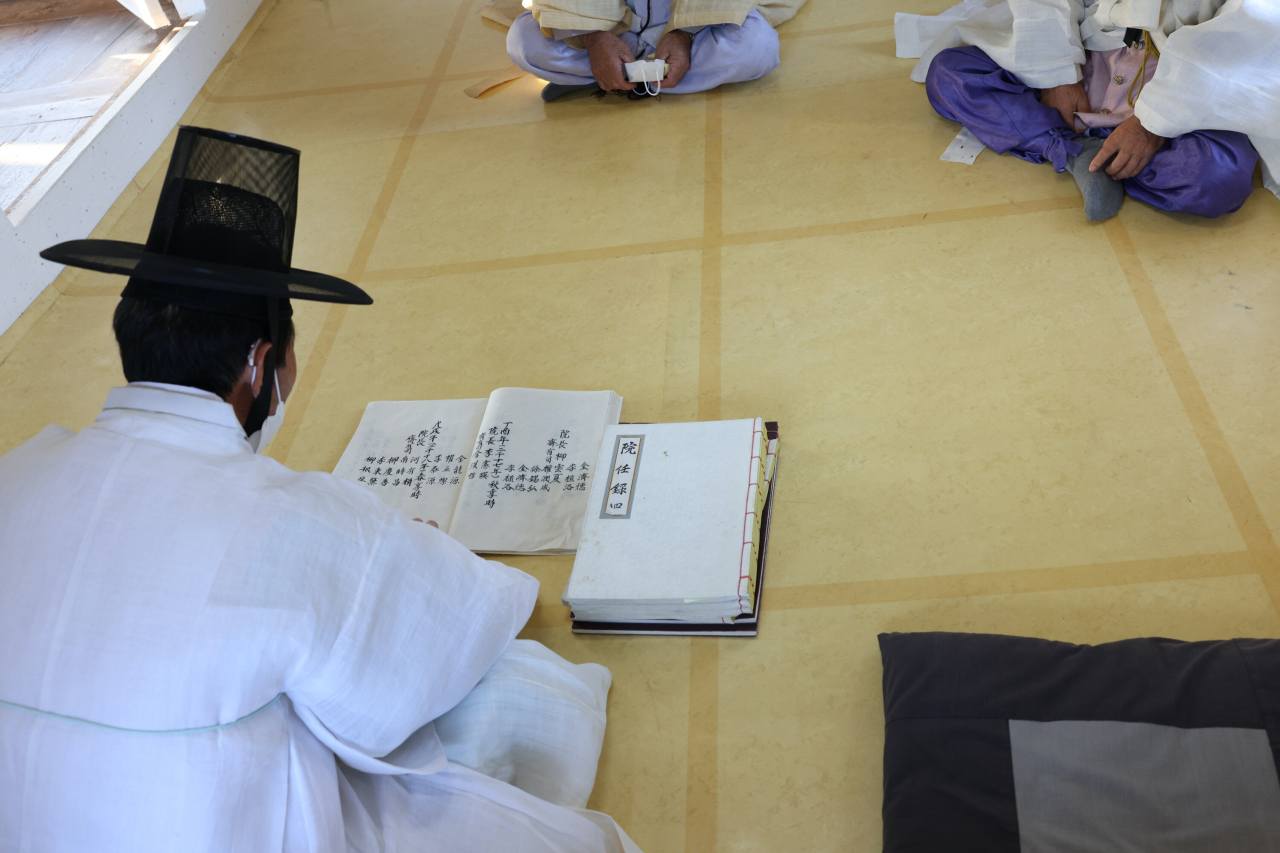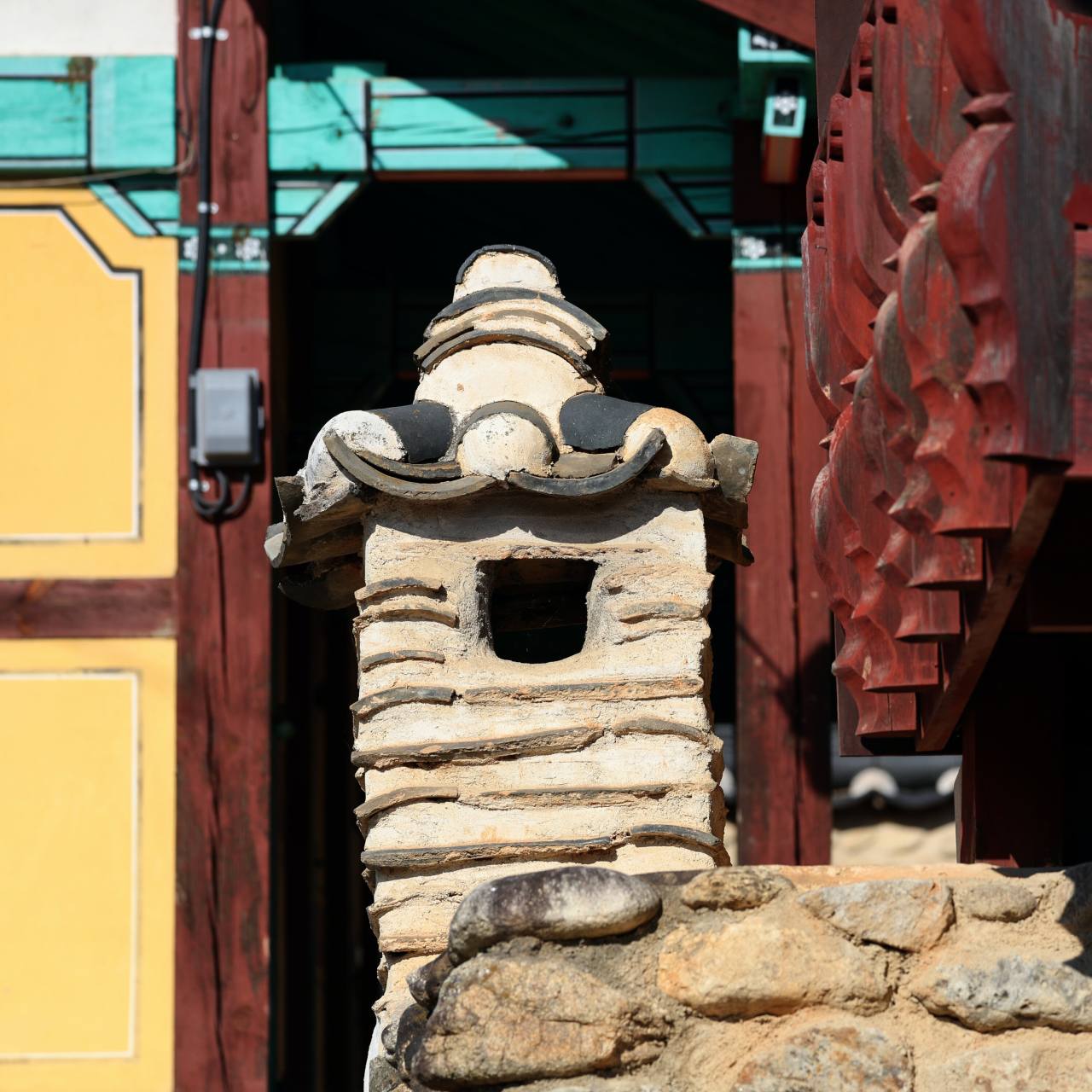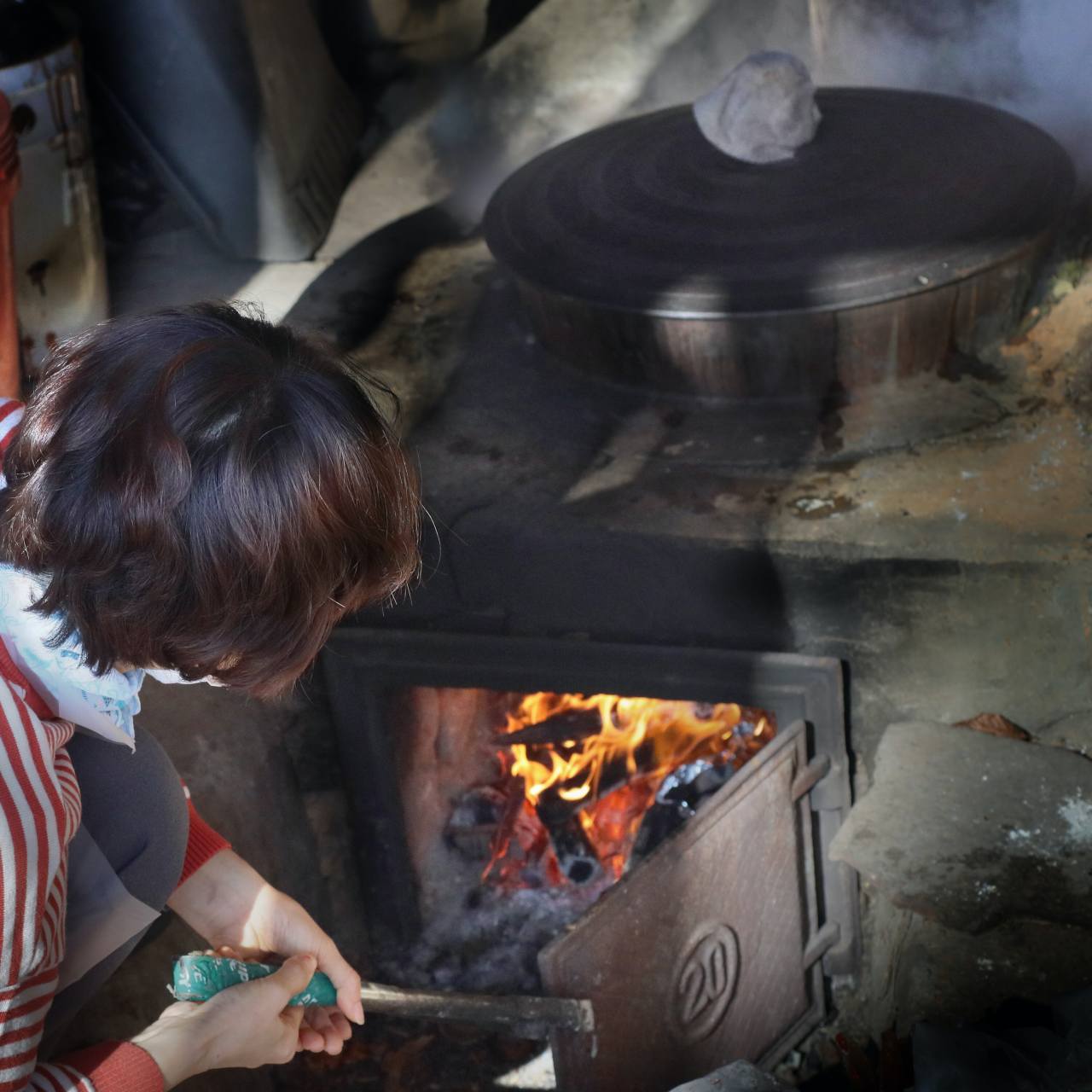[Visual History of Korea] Ondol: Original Korean floor heating system
By Korea HeraldPublished : Dec. 4, 2021 - 16:01

One of the most efficient uses of energy to heat our homes is right under our feet.
Koreans have been staying warm for millennia by using a minimum amount of fuel to cook while warming the home at the same time.
The “ondol,” an elevated indoor floor, is heated when fire used for cooking is simultaneously repurposed for heating the house.
Thermal energy from fuel burned for cooking or warming the room is transferred upward as the heat rises from the underfloor, warming up the stone slabs, which release the thermal energy gradually.
The stone slabs called “gudeuljang,” on which the indoor floor sits, are constructed with flat stone slabs and clay mud. Covered with oiled hanji, or mulberry paper, the elevated floor becomes a waterproof floor to sit and to sleep on.
Ondol floors are the reason Korean homes have indoor living space where we take off shoes to enter and sit on warm floor, instead of chairs or sofas
The ondol floor design of the Korean homes defines a culture of barefoot sitting on floor, which is unique compared even with other neighboring Asian cultures.
A traditional ondol room becomes a living room, a dining room when a low-legged dining table is brought in, a library or study room when the dining table is cleared of food and the table becomes a desk. At the end of the day, the multi-purpose ondol room turns into a bedroom with a warm floor.
The ondol floor traps heat and releases it efficiently. The word gudeul means heated stone.
The amount of heating is regulated by the amount of fuel burned, along with the amount of air let in from the mouth of the fire pit, which is called the “agungi. “
Under the floor, there is a maze of airflow paths called “gorae.” The lengthy maze spreads the thermal energy all around and keeps the warm air trapped underfloor as long as possible.
The secret to retaining the heat well while letting the smoke out lies with the design, the length and the location of the flue and the chimney.
Koreans have been staying warm for millennia by using a minimum amount of fuel to cook while warming the home at the same time.
The “ondol,” an elevated indoor floor, is heated when fire used for cooking is simultaneously repurposed for heating the house.
Thermal energy from fuel burned for cooking or warming the room is transferred upward as the heat rises from the underfloor, warming up the stone slabs, which release the thermal energy gradually.
The stone slabs called “gudeuljang,” on which the indoor floor sits, are constructed with flat stone slabs and clay mud. Covered with oiled hanji, or mulberry paper, the elevated floor becomes a waterproof floor to sit and to sleep on.
Ondol floors are the reason Korean homes have indoor living space where we take off shoes to enter and sit on warm floor, instead of chairs or sofas
The ondol floor design of the Korean homes defines a culture of barefoot sitting on floor, which is unique compared even with other neighboring Asian cultures.
A traditional ondol room becomes a living room, a dining room when a low-legged dining table is brought in, a library or study room when the dining table is cleared of food and the table becomes a desk. At the end of the day, the multi-purpose ondol room turns into a bedroom with a warm floor.
The ondol floor traps heat and releases it efficiently. The word gudeul means heated stone.
The amount of heating is regulated by the amount of fuel burned, along with the amount of air let in from the mouth of the fire pit, which is called the “agungi. “
Under the floor, there is a maze of airflow paths called “gorae.” The lengthy maze spreads the thermal energy all around and keeps the warm air trapped underfloor as long as possible.
The secret to retaining the heat well while letting the smoke out lies with the design, the length and the location of the flue and the chimney.

The chimney, located away from the house and connected to an underground flue, is topped off with a variety of unique chimneytop design called yeonga.
A well-made ondol floor can stay warm for many days after the floor has been sufficiently heated.
A variety of lengths of gorae fitting the size of the room run under the elevated floor through which warm air and smoke from the cooking fire runs, while transferring thermal energy to the underfloor stone slabs. The smoke escapes through a flue, usually located some distance from the house.
The heat transfers from the ondol stone slabs and clay underfloor, onto the room floor, and the air in the room, absent an abrupt change of air temperatures or humidity in the room.
The combination of the ondol floor heating and hanji, which traps and releases moisture, creates a comfortable indoor ecosystem regardless of the harsh winter weather outside.
The organic nature of the composition of traditional Korean houses -- with ondol floors with breathable hanji-covered doors and windows -- was generally healthy living, and worked well for most people right up until modern concrete apartment buildings came about.
“Some people who experience allergic reactions to concrete buildings find staying in my traditional mud house with ondol floor therapeutic and find their medical conditions improve” said Yim Gwi-jong who lives in Goun-dong, in the Gaya mountains in South Gyeongsang Province.
I’m old enough to remember the days before electric rice warmers. My grandmother used to keep rice warm by placing it in stainless steel rice bowls under a blanket, placed near the agungi, which is the warmest part of the floor.

Korean ondol which the American architect Frank Lloyd Wright (1867 -1959) popularized has since permeated into mainstream US and European cultures.
Underfloor heating systems using warm water between floor joists and electric radiant heating systems under hardwood floors bring indescribable warmth and comfort for indoor barefoot cultures all over the world.
During my four plus decades in the US I have noticed a significant increase in the number of American friends who now remove their shoes when they walk into homes.
By Hyungwon Kang (hyungwonkang@gmail.com)
--------------------------------------------------------------------
Korean American photojournalist and columnist Hyungwon Kang is currently documenting Korean history and culture in images and words for future generations. -- Ed.
-
Articles by Korea Herald







![[Graphic News] More Koreans say they plan long-distance trips this year](http://res.heraldm.com/phpwas/restmb_idxmake.php?idx=644&simg=/content/image/2024/04/17/20240417050828_0.gif&u=)
![[KH Explains] Hyundai's full hybrid edge to pay off amid slow transition to pure EVs](http://res.heraldm.com/phpwas/restmb_idxmake.php?idx=644&simg=/content/image/2024/04/18/20240418050645_0.jpg&u=20240419100350)






![[From the Scene] Monks, Buddhists hail return of remains of Buddhas](http://res.heraldm.com/phpwas/restmb_idxmake.php?idx=652&simg=/content/image/2024/04/19/20240419050617_0.jpg&u=20240419175937)

![[KH Explains] Hyundai's full hybrid edge to pay off amid slow transition to pure EVs](http://res.heraldm.com/phpwas/restmb_idxmake.php?idx=652&simg=/content/image/2024/04/18/20240418050645_0.jpg&u=20240419100350)

![[Today’s K-pop] Illit drops debut single remix](http://res.heraldm.com/phpwas/restmb_idxmake.php?idx=642&simg=/content/image/2024/04/19/20240419050612_0.jpg&u=)